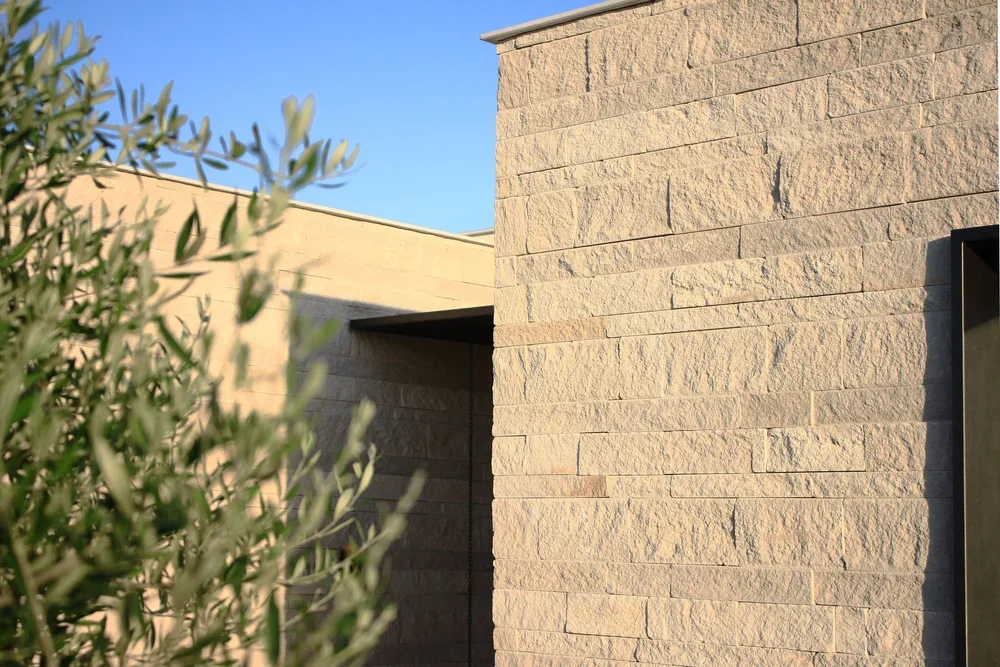The Architect’s Secret to Timeless Beauty: Materials That Stand the Test of Time
Cyprus’s architecture has always been rooted in its landscape — stone from the mountains, timber from nearby forests, and lime plasters that breathe with the air. These natural materials adapt to the Mediterranean environment rather than resist it. They patinate gracefully, regulate temperature, and connect a home to its site.
Modern alternatives often promise “maintenance-free” performance, yet many rely on synthetic resins, plastic films, or imitation textures. Under the island’s UV-intense conditions, these artificial layers warp, fade, or delaminate — undermining both beauty and longevity.
Choosing natural materials is not nostalgia; it is a sustainable, performance-driven decision grounded in centuries of experience.
Stone — The Soul of Cypriot Architecture
Nothing speaks of permanence like real stone. Locally sourced igneous rock and creamy beige limestones remain unmatched in durability, weathering beautifully under the Mediterranean sun. Their natural thermal mass stabilizes indoor temperatures, while their textured surfaces capture light and shadow with quiet depth.
Why Natural Stone Endures:
True mineral structure — no surface coating to crack or fade
Natural colour that will not bleach under UV exposure
Excellent resistance to salt air and seasonal humidity
Adds authenticity and local identity
Avoid: Cement-based “stone veneers” or molded concrete panels imitating stone. These products trap moisture, crack along joints, and often leach white efflorescence under Cyprus’s humidity. Their thin, cementitious faces lack the tactile richness and longevity of genuine stone.
Timber Cladding — Warmth and Life
Natural hardwoods such as oak, iroko and teak bring warmth and rhythm to façades. When detailed for Cyprus’s climate — ventilated battens, marine-grade fixings, regular oiling — they mature into silvery patinas rather than decay.
Why Natural Timber Excels:
Organic warmth and texture that complement stone and plaster
Breathes naturally, avoiding condensation and trapped heat
Develops character over time
True grain depth and sensorially rich, not printed texture
Be Cautious With: Composite woods and plastic cladding. Many “wood composites” consist of PVC or polyethylene mixed with sawdust, pressed into boards with artificial grain patterns. Their embossed “wood” surface feels hollow, overheats in direct sun, and fades unevenly. Once weathered, the plastic content exposes a chalky, synthetic texture. High-pressure laminates (HPL) with decorative layers also fade and delaminate in intense sun. True timber, even weathered, retains dignity.
Aluminium Trims — Use with Restraint
Aluminium, when used sparingly, can create elegant contrast against natural materials — for example, thin shadow-gap trims or discreet window reveals. In marine-grade finishes, it performs well in Cyprus’s climate.
When Aluminium Works:
As minimal detailing, not as dominant cladding
Powder-coated or anodised with certified marine-grade finish
Combined with stone or plaster for contrast and precision
Avoid: Aluminium fins or cladding wrapped in “wood-look” plastic films. These synthetic membranes degrade rapidly under UV, peel, and expose raw metal beneath. True design integrity comes from honest materials, not imitation.
Marble — Classic with Care
Marble’s cool touch and gentle luminosity make it perfect for Mediterranean interiors. When used judiciously — in hallways, staircases, or baths — it reflects natural light and endures decades of use. However, sealants and proper maintenance are essential in humid coastal zones.
Tip: Choose honed over polished finishes to reduce glare and slipperiness while maintaining elegance.
Ceramic & Porcelain Tiles — Durable Companions
When locally sourced stone isn’t feasible indoors, high-quality ceramics or porcelain tiles provide resilience and design versatility. Choose matte or lightly textured finishes to echo the natural feel of limestone or marble rather than mimic them superficially.
Avoid: Overly glossy “fake stone” patterns that imitate marble veining without its depth — authenticity matters even in imitation.
Polished Plaster — Modern, Mineral, Timeless
Polished plaster, or Venetian plaster, offers an interior artisanal surface with depth and reflectivity. Made from lime and marble dust, it regulates humidity naturally, making interiors more comfortable in Cyprus’s warm climate.
Advantages:
Naturally breathable and antimicrobial
Subtle sheen enhances Mediterranean light
Ages gracefully without peeling or yellowing
Avoid: Polymer-heavy “microcements” that seal the wall too tightly; they may blister under trapped humidity. True lime or mineral plasters age with elegance, not decay.
Natural wooden flooring grounds the room with warmth and organic texture | Image by Kam Idris
The Lasting Value of Authenticity
A Mediterranean home should age with grace — not decay behind peeling films and fading coatings. Real materials — stone, timber, lime plaster, marble — invite weathering as part of their beauty. They evolve, not deteriorate.
Imitation materials promise convenience but often deliver disappointment: surfaces that yellow, warp, or crack long before their time. In Cyprus, authenticity is not aesthetic snobbery — it’s environmental common sense.
To build with integrity is to let the material be itself. Stone should look like stone, wood like wood, plaster like plaster. Together, they create architecture that belongs to the land and endures its light for generations.



